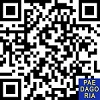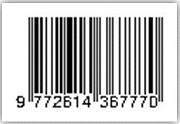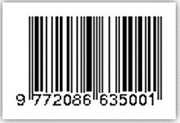AR-ASSISTED READ, ANSWER, DISCUSS, EXPLAIN, CREATE (RADEC) LEARNING MODEL TO ENCOURAGE STUDENT’S CRITICAL THINKING SKILL
Abstract
Abstrak: Perkembangan teknologi dalam pendidikan mendorong inovasi model pembelajaran untuk mengembangkan kemampuan berpikir kritis siswa sekolah dasar. Penelitian ini bertujuan mendeskripsikan pengaruh model pembelajaran RADEC yang dikombinasikan dengan media Augmented (AR) terhadap kemampuan berpikir kritis pada siswa kelas V SD dalam mata pelajaran matematika bangun ruang kubus dan balok. Penelitian kuantitatif dengan desain kuasi eksperimen melibatkan kelompok eksperimen (N=17) dan kontrol (N=15) di SDN II dan III Teratai. Data dikumpulkan melalui pre-test dan post-test dengan soal uraian berpikir kritis. Teknik analisis data menggunakan uji non parametrik karena data tidak sepenuhnya normal dan homogen. Temuan dalam penelitian ini mengindikasikan potensi model RADEC berbantuan AR dalam mendorong kemampuan berpikir kritis siswa sekolah dasar. Hasil uji Wilcoxon mengungkapkan terdapat perbedaan signifikan kemampuan berpikir kritis sebelum dan sesudah implementasi model RADEC berbantuan AR (Asymp sig. 0.001 < 0.005). Terjadi peningkatan kemampuan berpikir kritis sebesar 70% dengan rata-rata skor post-test 84, lebih tinggi dibandingkan model PBL (rata- rata skor post-test 69). Model RADEC berbantuan AR menjadi representasi evolusi pendekatan pedagogis yang mendorong siswa berpikir kritis dan berinteraksi dengan objek virtual secara interaktif.
Abstract: The development of technology in education encourages innovation in learning models to develop critical thinking skills in elementary school students. This study aims to describe the effect of the RADEC learning model combined with Augmented media (AR) on critical thinking skills in grade V elementary school students in the mathematics subject of cube also beam spaces. Quantitative study with a quasi-experimental design involved experimental (N=17) also control (N=15) groups at SDN II also III Teratai. Data were collected through pre-tests also post-tests with critical thinking questions. Data analysis techniques used non-parametric tests because the data were not completely normal also homogeneous. The findings in this study indicate the potential of the AR-assisted RADEC model in encouraging elementary school students' critical thinking skills. Wilcoxon test results revealed there was a significant difference in critical thinking skills before also after the implementation of the AR-assisted RADEC model (Asymp sig. 0.001<0.005). There was an increase in critical thinking skills by 70% with an average post-test score of 84, higher than the PBL model (average post-test score of 69). The AR-assisted RADEC model represents the evolution of pedagogical approaches that encourage students to think critically also interact with virtual objects interactively.
Keywords
Full Text:
PDFReferences
Abraham, I., & Supriyati, Y. (2022). Desain Kuasi Eksperimen Dalam Pendidikan: Literatur Review. Jurnal Ilmiah Mandala Education, 8(3), 2476–2482. https://doi.org/10.58258/jime.v8i3.3800
Afandi, N. H., Pusnawati, Y., Anggraini, A. E., Sukma, R., Dewi, I., & Malang, U. N. (2024). Efektivitas Model RADEC Berbantuan Video Animasi terhadap Kemampuan Berpikir Kritis Siswa Kelas 3 Sekolah Dasar. CMH: Cipta Media Harmoni, 5(1), 40–52. https://doi.org/10.53624/ptk.v5i1.414
Afriani, R., Neni, S., Erdi, T., & Utama, G. (2024). Penerapan Model Pembelajaran RADEC Melalui Metode Eksperimen Terhadap Kemampuan Berpikir Kritis Siswa pada Pembelajaran Ilmu Pengetahuan Alam Materi Organ Gerak Hewan Kelas V SDN 13 Singkawang. Jurnal Pendidikan Amartha, 3(1), 49–58. https://doi.org/10.57235/jpa.v3i1
Agustine, J., & Nawawi, S. (2020). Analisis keterampilan berpikir kritis peserta didik SMA kelas X IPA pada materi virus (Analysis of science ten grades students’ critical thinking skills toward virus concepts). Assimilation: Indonesian Journal of Biology Education, 3(1), 7–11. https://doi.org/10.17509/aijbe.v3i1.23297
Alkhabra, Y. A., Ibrahem, U. M., & Alkhabra, S. A. (2023). Augmented reality technology in enhancing learning retention and critical thinking according to STEAM program. Humanities and Social Sciences Communications, 10(1). https://doi.org/10.1057/s41599-023-01650-w
Angraini, L. M., Yolanda, F., & Muhammad, I. (2023). Augmented Reality: The Improvement of Computational Thinking Based on Students’ Initial Mathematical Ability. International Journal of Instruction, 16(3), 1033–1054. https://doi.org/10.29333/iji.2023.16355a
Astuti, I. A. D., Sulisworo, D., & Firdaus, T. (2021). What is the student’s response to augmented reality-based teaching materials in elementary school? Journal of Physics: Conference Series, 1842(1), 012022. https://doi.org/doi: 10.1088/issn.1742-6596
Damayanti, I., & Iqbal Al Ghozali, M. (2023). Implementation of the Radec Learning Model To Improve High Level Thinking Skills in Ipas Courses. Jurnal Cakrawala Pendas, 9(3), 399–408. http://dx.doi.org/10.31949/jcp.v9i3.4967
Du, J., & Dewitt, D. (2024). Technology acceptance of a wearable collaborative augmented reality system in learning chemistry among junior high school students. Journal of Pedagogical Research, 8(1), 106–119. https://doi.org/10.33902/JPR.202425282
Firdausya, B. T. W. & A. F. (2024). Development of Assemblr-Edu Based Learning Media with RADEC Learning Model on Implementation of P5 in Elementary School. Jurnal Paedagogy:Jurnal Penelitian Dan Pengembangan Pendidikan, 11(3), 529–537. https://e-journal.undikma.ac.id/index.php/pedagogy/index
Ghozali, I. (2018). Aplikasi Analisis Multivariate dengan Program IBM SPSS 25. Badan Penerbit Universitas Diponegoro.
Haleem, A., Javaid, M., Qadri, M. A., & Suman, R. (2022). Understanding the role of digital technologies in education: A review. Sustainable Operations and Computers, 3(May), 275–285. https://doi.org/10.1016/j.susoc.2022.05.004
Halim, A. (2022). Pengaruh Model Read Answer Discussion Explain and Create ( Radec ) Pada Pembelajaran Tematik Terhadap Hasil Belajar Siswa Dimoderasi Motivasi Belajar. Sosioedukasi, 11(1), 121–129. https://doi.org/10.36526/sosioedukasi.v11i1.1950
Halimah, S., Usman, H., & Maryam, S. (2023). Peningkatkan Kemampuan Berpikir Kritis Dalam Pembelajaran IPA Melalui Penerapan Model Pembelajaran Problem Based Learning (PBL) di Sekolah Dasar. JURNAL SYNTAX IMPERATIF : Jurnal Ilmu Sosial Dan Pendidikan, 3(6), 403–413. https://doi.org/10.36418/syntax-imperatif.v3i6.207
Hanggara, Y., Qohar, A., & Sukoriyanto. (2024). The Impact of Augmented Reality-Based Mathematics Learning Games on Students’ Critical Thinking Skills. International Journal of Interactive Mobile Technologies, 18(7), 173–187. https://doi.org/10.3991/ijim.v18i07.48067
Hardiansah, G., Ardiani, F., Dina Kalifia, A., dan Taknologi, S., & Teknologi Yogyakarta, U. (2024). Implementasi Augmented Reality Pembelajaran Organ Tubuh Manusia Berbasis Mobile. Jurnal TEKINKOM, 7(1), 218–225. https://doi.org/10.37600/tekinkom.v7i1.1255
Ilham, M. D. D. S. B. L. S. F. R. Y. N. A. R. Z. S. F. (2023). Media Pembelajaran: Teori, Implementasi, dan Evaluasi (Sriadhi (ed.)). Jejak Pustaka.
Ilham S, M., Kune, S., & Rukli, R. (2020). The Effect of Radec’s Learning Model Assisted by Zoom Application on Science Critical Thinking Ability during Covid-19 Pandemic Era. Indonesian Journal of Primary Education, 4(2), 174–183. https://doi.org/10.17509/ijpe.v4i2.29262
Irwan; Arnadi; Aslan. (2024). Developing Critical Thinking Skills Of Primary School Students Through Independent Curriculum Learning. Indonesian Journal of Education (INJOE), 4(3), 788–803. https://doi.org/10.25688/2076-9121.2024.18.1-1.03
Jabar, J. M., Hidayat, R., Samat, N. A., Rohizan, M. F. H., Salim, N., & Norazhar, S. A. (2022). Augmented reality learning in mathematics education: A systematic literature review. Journal of Higher Education Theory and Practice, 22(15), 183–202. https://doi.org/10.33423/jhetp.v22i15.5570
Jumaena, Salmilah, & Munir, N. P. (2024). Efektivitas Media Pembelajaran Augmented Reality (AR) Pemodelan Bangun Ruang Terhadap Pemahaman Konsep Geometris Siswa Kelas V Sekolah Dasar. Refleksi, 12(3), 149–160. https://p3i.my.id/index.php/refleksi
Kiely, J., O’toole, L., Brosnan, H., & Zara O’brien, E. (2021). Parental involvement, engagement and partnership in their children’s learning during the primary school years Part 2 (A) Case Studies & 2 (B) Oral Language Workshops. Institiuid Oideachais Marino: Institute of Education. https://www.mie.ie/en/research/research_projects/completed_projects/parental_involvement_engagement_and_partnership_in_their_childrens_learning_during_the_primary_school_years/july-2021-final-version-of-report-inc-exec-summary.pdf
Kiska, Nurul Delima, Muhammad Dewa Zulkhi, Anggi Kurniawan, Usniarni, N. Q. I. S. (2024). The Effect of Implementing The Radec Learning on Improving Student’s Critical Thinking Skill Integrated With Cultural Diversity. International Conference on Global Tourism Science and Vocational Education, 1(1), 250–262. https://doi.org/https://doi.org/10.62951/icgtsave.v1i1.22
Komang, N., Candraswari, T., & Suniasih, N. W. (2024). RADEC Learning Model with the Assistance of Media Question Box to Improve Primary School Students ’ Critical Thinking Ability. Thinking Skills and Creativity Journal, 7(1), 61–70. https://doi.org/10.23887/tscj.v7i1.75312
Lubis, A., Siregar, D., Nurbulan, E., & Saragi, E. J. (2024). Application of the RADEC Learning Model in Enhancing Students ’ Critical Thinking Skills in Social Studies Learning. Edutec: Journal of Education and Technlogy, 8(1), 37–45. https://doi.org/10.29062/edu.v8i1
Malik, R. S., Emzir, E., & Sumarni, S. (2020). Improving students’ critical thinking skills through STEM-based E-learning. Journal of Physics: Conference Series, 1469(1), 012073. https://doi.org/doi: 10.1088/issn.1742-6596
Muhamad, W., Kurniawan, D., & Suhandi, A. (2022). Augmented Reality to Support Inquiry Learning in Elementary Schools: A Systematic Literature Review. International Journal of Interactive Mobile Technologies, 16(10), 84–101. https://online-journals.org/index.php/i-jim/issue/view/835
Muthmainnah, A., Kurniawan, D. T., Sukardi, R. R., & Zayadi, N. H. (2024). Radec Learning Model With E-Modul : An Effort to Enhance Student Critical Thinking Skills. Paedagogia: Jurnal Penelitian Pendidikan, 27(2), 206–213. https://doi.org/10.20961/paedagogia.v27i2.84207
Najoan, R., & Makawawa, J. C. (2023). Pengaruh Pembelajaran Berbasis HOTS terhadap Kemampuan Berpikir Kritis Matematis Siswa Sekolah Dasar. Didaktika: Jurnal Kependidikan, 12(4), 889–900. https://jurnaldidaktika.org
Nindiasari, H., Pranata, M. F., Sukirwan, Sugiman, Fathurrohman, M., Ruhimat, A., & Yuhana, Y. (2024). The Use of Augmented Reality To Improve Students’ Geometry Concept Problem-Solving Skills Through the Steam Approach. Infinity Journal, 13(1), 119–138. https://doi.org/10.22460/infinity.v13i1.p119-138
Prasetya, F., Fortuna, A., Samala, A. D., Rawas, S., Mystakidis, S., Syahril, Waskito, Primawati, Wulansari, R. E., & Kassymova, G. K. (2024). The impact of augmented reality learning experiences based on the motivational design model: A meta-analysis. Social Sciences and Humanities Open, 10(April), 100926. https://doi.org/10.1016/j.ssaho.2024.100926
Putra, Amalia & Fitriani. (2020). Analisis Kesulitan Siswa Dalam Menyelesaikan Soal Uraian Pada Materi Bangun Ruang Sisi Datar. JPMI (Jurnal Pembelajaran Matematika Inovatif), 3(4), 313–322. https://doi.org/10.22460/jpmi.v5i1.123-130
Rahayu, Y. S., & Saud2, U. S. (2022). Analysis Student’s Critical Thinking Ability Through The Application Of The RADEC Model In Elementary School. ICEE-4 “The Direction of Elementary Education in the Future Challenge,” 4, 926–935. http://proceedings.upi.edu/index.php/icee/article/download/2059/1901/
Rahmawati, R., & Ertikanto, C. (2023). The impact of innovative learning models on students’ 21st-century skills: A systematic review. Jurnal Pendidikan IPA Indonesia, 12(1), 139–151. https://doi.org/https://doi.org/10.15294/jpii.v12i1
Rozi, F., Kurniawan, R. R., & Sukmana, F. (2021). Pembelajaran Pengenalan Bangun Ruang Berbasis Augmented Reality Pada Mata Pelajaran Matematika. Jurnal Ilmiah Penelitian Dan Pembelajaran Informatika, 6(2), 436–447. https://doi.org/https://doi.org/10.29100/jipi.v6i2.218 0
Rusmansyah, Yuanita, L., Ibrahim, M., Isnawati, Rizkiana, F., & Kusuma, A. E. (2020). Effect of scientific critical thinking model to train critical thinking skills and student self efficacy. Journal of Physics: Conference Series, 1422(1). https://doi.org/10.1088/1742-6596/1422/1/012015
Siregar, L. S., Wahyu, W., & Sopandi, W. (2020). Polymer learning design using Read, Answer, Discuss, Explain and Create (RADEC) model based on Google Classroom to develop student’s mastery of concepts. Journal of Physics: Conference Series, 1469(1). https://doi.org/10.1088/1742-6596/1469/1/012078
Sopandi, W. (2017). The Quality Improvement of Learning Processes and Achievements Through The Read-Answer-Discuss-Explain-and Create Learning. 8th Pedagogy International Seminar 2017: Enhancement of Pedagogy in Cultural Diversity Toward Excellence in Education, 132–139. The quality improvement of learning processes and achievements through the read-answer-discuss-explain-and create learning model implementation
Suhati, T., Hendrawan, B., & Permana, R. (2023). Pengembangan Media Pembelajaran SOLCAR Berbantuan Assemblr Edu Untuk Meningkatkan Hasil Belajar IPA Materi Sistem Tata Surya Kelas VI Sekolah Dasar. JERUMI: Journal of Education Religion Humanities and Multidiciplinary, 1(2), 108–115. https://doi.org/10.57235/jerumi.v1i2.1248
Sukmawati, I., & Imron, A. (2024). Implementation of the RADEC ( Read , Answer , Discuss , Explain , Create ) model integrated culturally responsive teaching to improve students ’ s 4C skills. Jurnal Teori Dan Praksis Pembelajaran IPS, 9(2), 114–130. https://doi.org/http://dx.doi.org/10.17977/um022v9i22024p114
Sumardi, L., Rohman, A., & Wahyudiati, D. (2020). ImplementasikPembelajarankTematikiSiswaoKelasiRendahodi MI Yadinu Banok Lombok Timur. International Journal of Instruction, 13(3), 158. https://doi.org/10.29333/iji.2020.13325a
Suratmi, S., Supriatna, N., Sopandi, W., & Wulan, A. R. (2022). Lectures during the COVID-19 pandemic using the Education for Sustainability Development Oriented RADEC learning model. Cypriot Journal of Educational Sciences, 17(9), 3478–3489. https://doi.org/10.18844/cjes.v17i9.7125
Susanti, R. M., Rokayah, & Kusmawan. (2023). Penerapan Model Pembelajaran RADEC Berbasis Literasi Sains Untuk Meningkatkan Kemampuan Berpikir Kritis Siswa Pada Mata Pelajaran IPA Kelas V Sekolah Dasar. Pendas: Jurnal Ilmiah Pendidikan Dasar, 8(2), 5491–5516. https://scholar.google.com/scholar?oi=bibs&cluster=3599340616112257833&btnI=1&hl=en
Syafi’i, I., Chusnah, A., Inayati, N. A., & Sari, L. P. (2021). Strategi Pendidikan dalam Menumbuhkan Kemampuan Berfikir Kritis Anak Usia Dini di Masa Covid-19. JECED: Journal of Early Childhood Education and Development, 3(1), 33–40. https://doi.org/https://doi.org/10.15642/jeced.v3i1
Syahputra, M. R., Siregar, Mhd. F. Z., & N. Y. (2023). Principal Strategic Management in Enhancing Teacher Professionalisme at MAN 3 Langkat. Education Achievement: Journal of Science and Research, 121–128. https://doi.org/10.51178/jsr.v4i2.1512
Tahimu, M. R. (2024). Menerapkan Nilai-Nilai Pemikiran Dewi Sartika Dalam Pendidikan Modern. Musawa: Journal for Gender Studies, 16(1), 31–51. https://doi.org/10.24239/msw.v16i1.3132
Tang, F. (2024). Understanding the role of digital immersive technology in educating the students of english language: does it promote critical thinking and self-directed learning for achieving sustainability in education with the help of teamwork? BMC Psychology, 12(1), 1–14. https://doi.org/10.1186/s40359-024-01636-6
V. P. Coletta. (2023). Evidence for a normal distribution of normalized gains. Physical Review Physics Education Research, 19(1), 010111. https://doi.org/doi: 10.1103/PhysRevPhysEducRes.19.010111
Victor, T., Saputro, D., Purnasari, P. D., & Lumbantobing, W. L. (2024). Augmented Reality for Mathematics Learning : Could We Implement It in Elementary School ? Mosharafa: Jurnal Pendidikan Matematika, 13(1), 163–175. https://doi.org/10.31980/mosharafa.v13i1.1984
Widodo, S., Nursaptini, N., Novitasari, S., & Sutisna, D. (2022). The Use of Augmented Reality as a Learning Media to Improve Understanding of Geometry Concepts in Elementary School Students. Journal of Education Technology, 6(1), 118–125. https://doi.org/10.23887/jet.v6i1
Yasmin, A. D., & Yoto, Y. (2023). AR-Learning: Media pembelajaran berbasis Mobile dengan Visualisasi 3 Dimensi Sebagai Upaya untuk Meningkatkan Critical Thinking Siswa. Jurnal Kependidikan, 12(4), 751–760. https://jurnaldidaktika.org
Zapata, M., Ramos-Galarza, C., Valencia-Aragón, K., & Guachi, L. (2024). Enhancing mathematics learning with 3D augmented reality escape room. International Journal of Educational Research Open, 7(June). https://doi.org/10.1016/j.ijedro.2024.100389
Živković, S. (2016). An Overview of the Constructivist Theories and Their Possible Implications in the Design of the ESP Digital Learning Environment. European Journal of Multidisciplinary Studies, 3(1), 88. https://doi.org/10.26417/ejms.v3i1.p88-93
DOI: https://doi.org/10.31764/paedagoria.v16i2.29680
Refbacks
- There are currently no refbacks.
Copyright (c) 2025 Siti Maisarah

This work is licensed under a Creative Commons Attribution-ShareAlike 4.0 International License.
Paedagoria : Jurnal Kajian, Penelitian dan Pengembangan Kependidikan
Fakultas Keguruan & Ilmu Pendidikan | Universitas Muhammadiyah Mataram.
_______________________________________________
 | Paedagoria : Jurnal Kajian, Penelitian dan Pengembangan Kependidikan |
______________________________________________
CURRENT INDEXING:
EDITORIAL OFFICE:

















